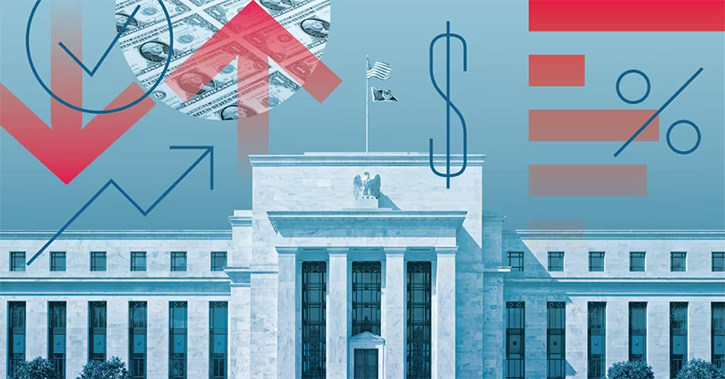Best asset class for 2016: Equity or fixed income?
Bruce Cooper: We have a broadly cautious outlook on both bonds and stocks for this year. For fixed income, we expect low single-digit returns. For equities, it's in the low- to mid-single digits. So that would give you slightly higher returns from equities, but of course that will come with more risk, and we do expect volatility to persist throughout the year. So I'd frame it up as cautious on both. We think we live in what we call a low-return world, and in that world we think investors should have maximum diversification. So you should have both equities and fixed income in the portfolio. The role of fixed income is to provide that diversification, to provide stability to a portfolio, which I think will be very important this year as we pass through periods of volatility.
Best equity market for 2016: Canada, U.S. or international?
Geographically, our strongest view is that we prefer developed markets over emerging. We're quite cautious on the emerging world. We see decelerating growth, relatively high debt levels, and in a volatile environment we think the emerging world will struggle. Tactically, we think Europe looks interesting. Longer-term, we don’t have a strong preference for Europe, U.S. or Canada, but tactically we think Europe could do a little better over the next few months. Earnings growth should be a little bit better there and the economy should accelerate, albeit off a lower base.
Best bonds for 2016: Corporate or government?
We're quite cautious on high yield bonds, particularly. We have been cautious on high yield really for about 18 months. 18 months ago, we were cautious because yields in the high-yield space were quite low. Today the yields are higher, but default rates are increasing. We think that’s going to continue to be the case, particularly in parts of the high-yield space, for example, energy and materials, where we are seeing the stress come through for much lower commodity prices.
Government bonds, clearly, with yields where they are, returns are going to be low. But we think they could play a very important role in a portfolio as a diversifier. Investment-grade corporates do give you a little bit more income. Of course, the spread today of investment grade over governments in that 100 to 150 basis point range, depending where you are, we think that’s useful. You get bit of incremental income. It will come with a little more volatility. So we think there is a place for both government bonds and investment-grade corporates in a portfolio today. I talked about the value of that diversification. But we would be quite cautious on the high-yield part of the market.
Currency outlook for 2016: Where is our dollar headed?
On currency, to get back to this idea of diversification, I think it's crucial in a portfolio have maximum diversification. That would include, for Canadian investors, some exposure to global currencies, particularly the U.S. dollar. So part of the way we view currencies is through the prism of diversification in challenging markets. The U.S. dollar tends to go up, obviously that’s what we are seeing here early in this year. And so you absolutely want to have some U.S. dollar exposure to provide you with that diversification.
From a longer-term perspective, the Canadian dollar is getting down to very low levels, but we think it’s going to stay low for quite a long period of time. I think the Governor of the Bank of Canada has addressed this quite clearly. The Canadian economy needs to go through a pretty meaningful transition from one that was driven by, on the one hand, investment in the commodity sectors, on the other hand, investment in real estate. We need either part of the economy to pick up and that will require the loonie to stay low for quite a long period of time, I think years as opposed to months. So it’s useful for Canadian investors to have exposure to global currencies to provide that diversification.
Energy outlook for 2016: Will oil make a comeback?
From a much longer-term perspective on oil, we think it will go higher eventually, but probably not here in the short term. Here we are in the low 30s. Our view is that over long periods of time, commodities gravitate to the marginal cost of supply. We would view the marginal cost of supply for oil as probably $50 or $60. But clearly in the short term, meaning the next few quarters, we've got meaningful inventory overhang. It's going to take some period of time to chew through that inventory and, on top of that, as global growth comes under pressure, we could imagine a scenario where demand is a little weaker than expected.
So oil will stay lower for longer. Eventually it will go up, but it will stay lower for longer here in 2016. I think from an economic perspective, this could be a big drag on Canada, because we're not going to see meaningful investment of any kind in the oil sector in Canada, because we are actually, from a global perspective, a high-cost producer. I think the last point I would make on the energy sector is I do imagine a lot of financial distress here, bankruptcies on both sides of the Canada-U.S. border. Of course, shale producers expanded very rapidly. In a lot of cases, they did that by taking a lot of debt on their balance sheets. I think we are going to see a lot of bankruptcies in U.S. producers, and I am sure we'll see a lot of bankruptcies on the Canadian side among the smaller, weaker balance sheet companies as well.
Interest rate outlook for 2016: Will Canada follow the Fed?
We've had a pretty simple perspective on interest rates for five or six years; we're firmly planted in the lower for longer camp. And it's tied to our view that we expect global economic growth to be persistently weak.
So, the Fed has raised rates, which it did last December. I think the Fed signaled it might raise rates four times this year. The market thinks maybe twice. We would be on the low end of that expectation curve. I could imagine they might only raise once, for example. We are somewhat concerned that the U.S. economy is a little weaker than the consensus believes. It's not to say it's disastrous or it's heading for recession. But growth in some cases does seem to be weakening off, of course markets are volatile.
I think when the Fed examines the data as it comes through in 2016, looking at that sort of weaker growth combined with market volatility, they'll be more cautious on raising rates than people anticipate. So lower for longer, that’s the case both for short-term interest rates, as administered by central banks, but also for long-term interest rates, we think we're stuck in this pickle for a while longer.





















